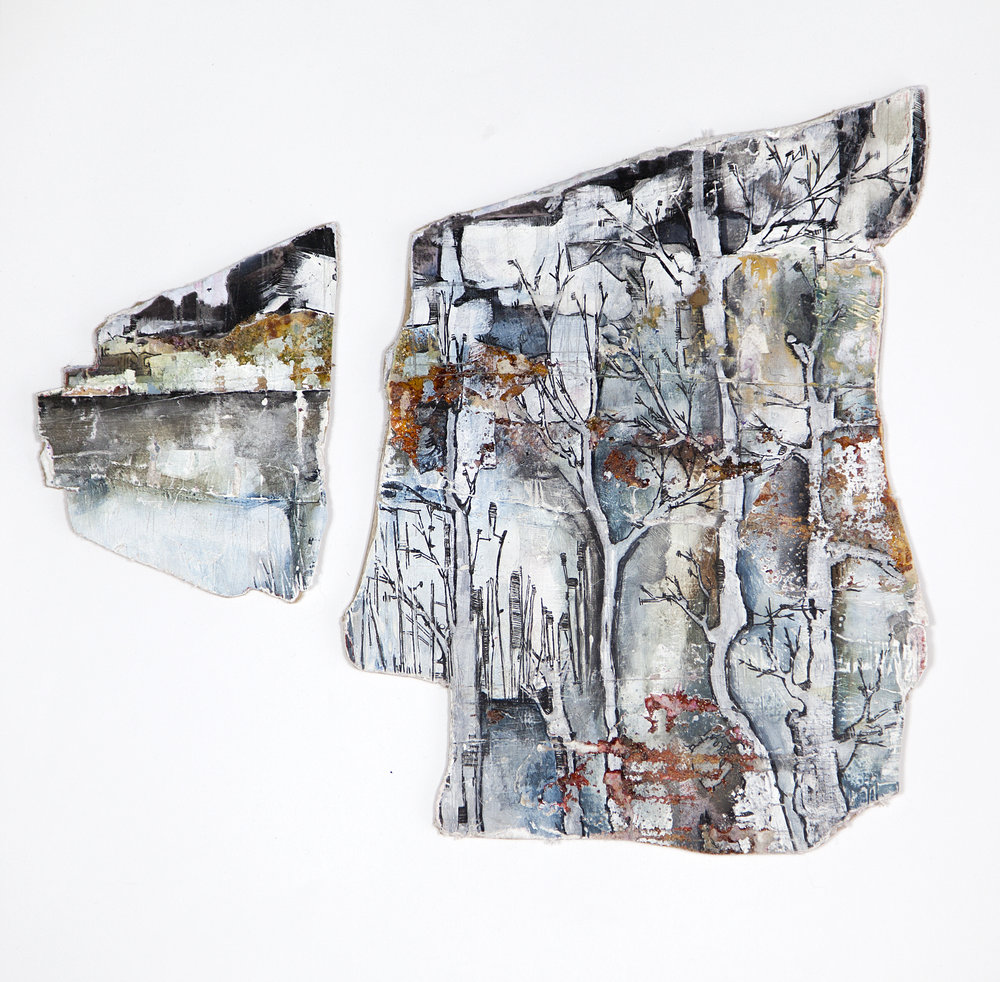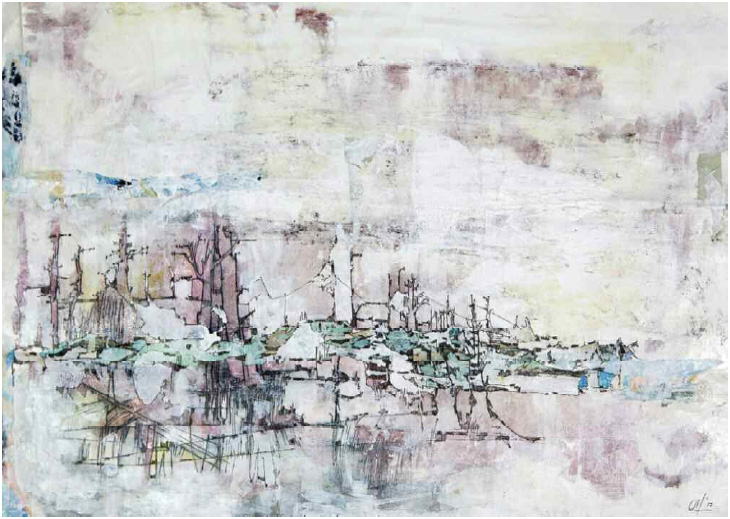I came across the work of Ioanna Kythreotou from the group exhibition Sender/Recipient at the House of Cyprus in New York in the summer of 2017. Ioanna lives and works in beautiful, sunny Cyprus. She is among the contemporary artists who are proving painting is far from outdated or outlived. Her work pushes the boundaries of the medium as though rediscovering what it means for her, her practice, and painting overall. There are multiple aspects of Ioanna’s work that grasped my attention. This made me eager to learn and share more about it. Luckily, Ioanna and I got in touch for a brief discussion shared below. We spoke about her practice, her sources of inspiration and her use of color, among other things. Our conversation will give you a deeper glimpse into her practice until she is back in New York and I pester her for more information.
The Interview:

Hi Ioanna, thank you so much for taking the time to chat with me about your work. I will cut to the chase and begin immediately with the juicy things.
Two things drew me the most to your work. One is the use of and reference to architectural space, which appears to mix with the natural and organic element in many of your works. The second is your use of color. Your paintings seem to grasp the viewer’s attention with the color and then immerse them deeper into the picture. In a way, color appears to me to be the primary element to trigger feeling and memory within the viewer. I will, thus, begin with a few questions on these aspects.
Were you interested in the architectural from the beginning of your artistic endeavors?
Actually, I am more interested in the relationship between the shapes and lines in a construction that has a certain structure whether that is a building or a stack of five chairs. I am more interested in structure rather than architecture per se.
What was it that led you to the weaving of the phenomenologically constructed and unconstructed elements, like in your works Ερημιά (Eremia) or Tales of Dystopian Grandeur?
For both Eremia and Tales of Dystopian Grandeur, abandoned locations were my main source of inspiration. These works are generally based on a conceived meta-apocalyptic reality that can occur after the absence of human intervention. What led me to this work was mostly the beauty of the wild, abandoned landscape and the cathartic role nature assumes that, when left unsupervised, she wins the battle against all traces of human civilization. As strong as we may believe the foundations of human civilization to be, they are weak and powerless before nature.

This connection you describe between the natural and the constructed element recalls a period from art history – Romanticism. Artists and intellectuals became enamored with the images of ruins devoured by nature for their alluringly tragic beauty. The image of ruins being taken over by plants evokes the memory of human mortality as expressed through human creation, in comparison to the ancient power and continuity of nature.
Your work references this contrast between human mortality and powerful nature. However, the concept of memory plays into this too, as also expressed in the exhibition catalog you sent me for Sender/Recipient. From where do you draw the material for the landscapes you create in your paintings?
Material for the landscapes can be drawn from excavation locations. The traces of human presence on earth, the beauty of the abandoned landscape, and the cleansing role which nature assumes against human civilization are after all, the central factors in the entirety of this group of works. Moreover, a deep feeling of loneliness and abandoned beauty haunt excavation locations of abandoned neighborhoods and homes that have been empty for years. This, in part, is due to the lack of human presence, and the role of nature which takes control through the trees which grow amongst the ruins.
The pictorial vocabulary that you use is fairly universal. This allows the viewer to apply their own memories in each of your works. Is this something intentional? When working on a painting, do you wonder about the ways in which you may evoke and trigger the viewer to project their own memories?
There is a magic allure in knowing that every unearthed stone may have been touched by thousands of hands before you. That it has remained in idleness for thousands of years, has seen thousands of seasons, and thousands of people have passed by it. I love that ruins serve as a constant reminder of the tragic fragility of life – how short it truly is. I have put a lot of thought into how human constructions would be years after removing the element of supervision. Whatever comes from the earth, in the end, will return to her because that is where it belongs.
With this in mind, I felt that your paintings create a space of their own. Your own thoughts and memories mix with those of each viewer reflecting the way you intertwine constructed elements with natural ones. And all of this is sort of orchestrated or encouraged through color. In this way, your works become an experience and are somewhat unique for each person who encounters them.
In relation to your use of color, could you tell us a bit more about how you use it in these works? It is noticeable that your choice in color changes from one group of works to the next.
In the paintings and designs of my previous work, I applied the color through a use of many layers of diluted paint and ink. With this technique, I aim to create the three-dimensional feel you get from each respective piece. Then, the lines made with ink aim to create and emphasize the structure. In my later work, I used a similar technique with the difference that I have tried to fade the colors by using more white paint.
One more fascinating aspect of your work that I would love to address is the lack of the human form from every topography you create. Regardless of this choice to not depict the human body, the trees and structural lines you create give the sense of a presence through … ironically… absence. Would you like to elaborate on this a bit more?
I mostly dealt with a future dystopia in my works. I remove the human presence so that it does not affect the scene at all in order to illustrate the terrifying but also romantic idea that nature takes over everything. Nature gains full control, through the vegetation that grows amongst the unsupervised ruins. I want to emphasize that magnetic feeling of loneliness as well as the beauty of abandonment.

Finally, what new are you preparing lately that would you like to share?
At this time I am preparing work for another group exhibition, but also a monographic one in the United States.
Wonderful! I look forward to seeing your work in the US again and wish you all the best. Thank you for taking the time to share more about your work and practice with us. It has been most exciting!
